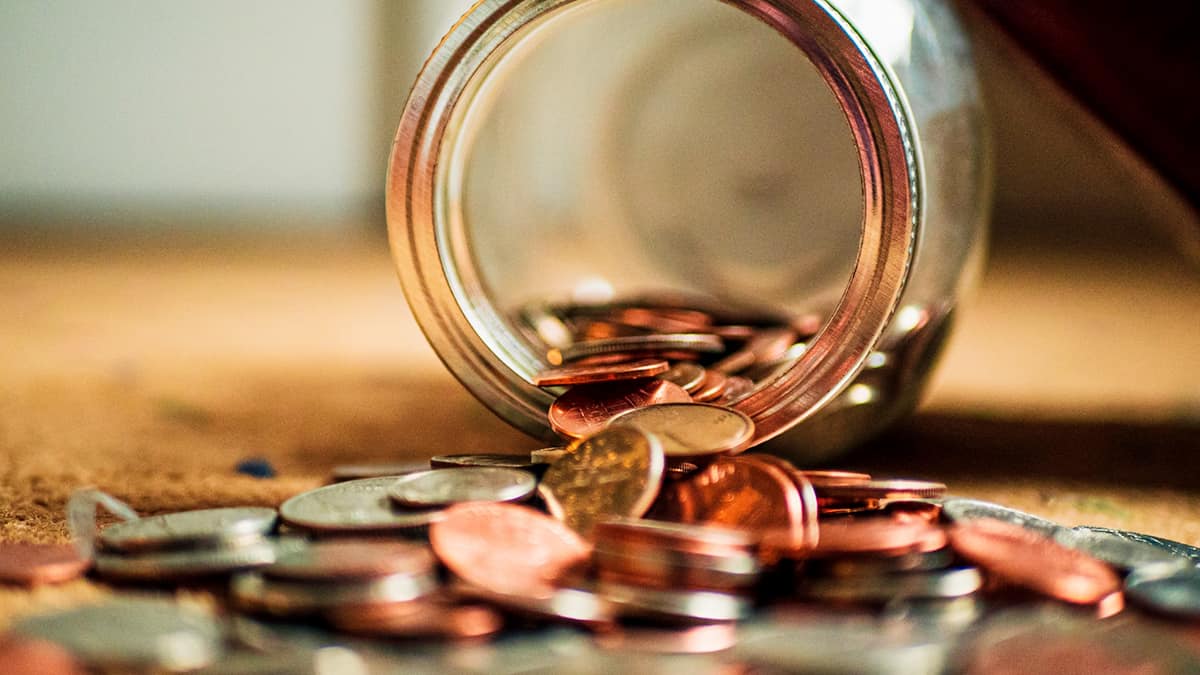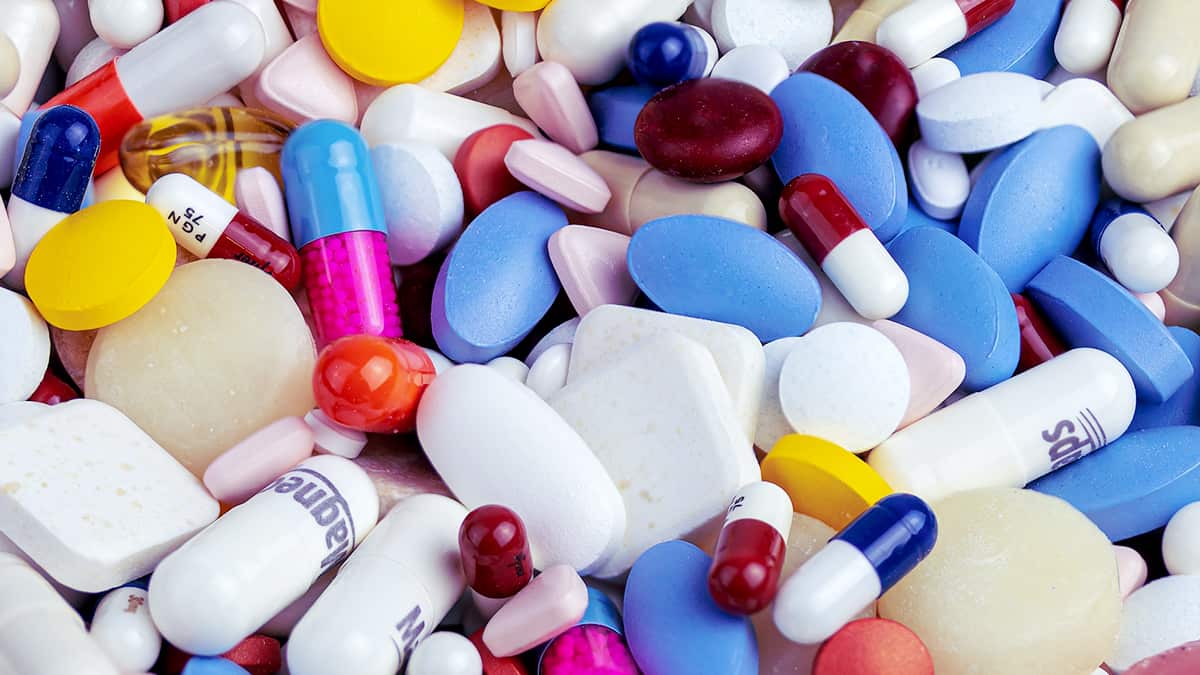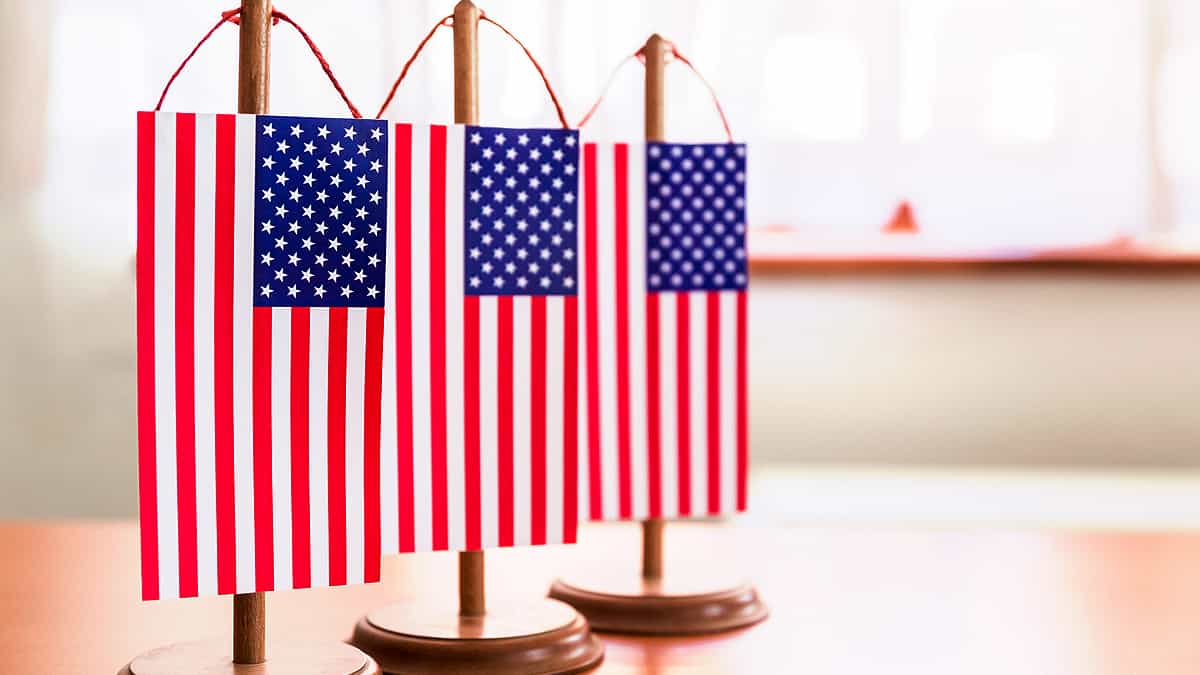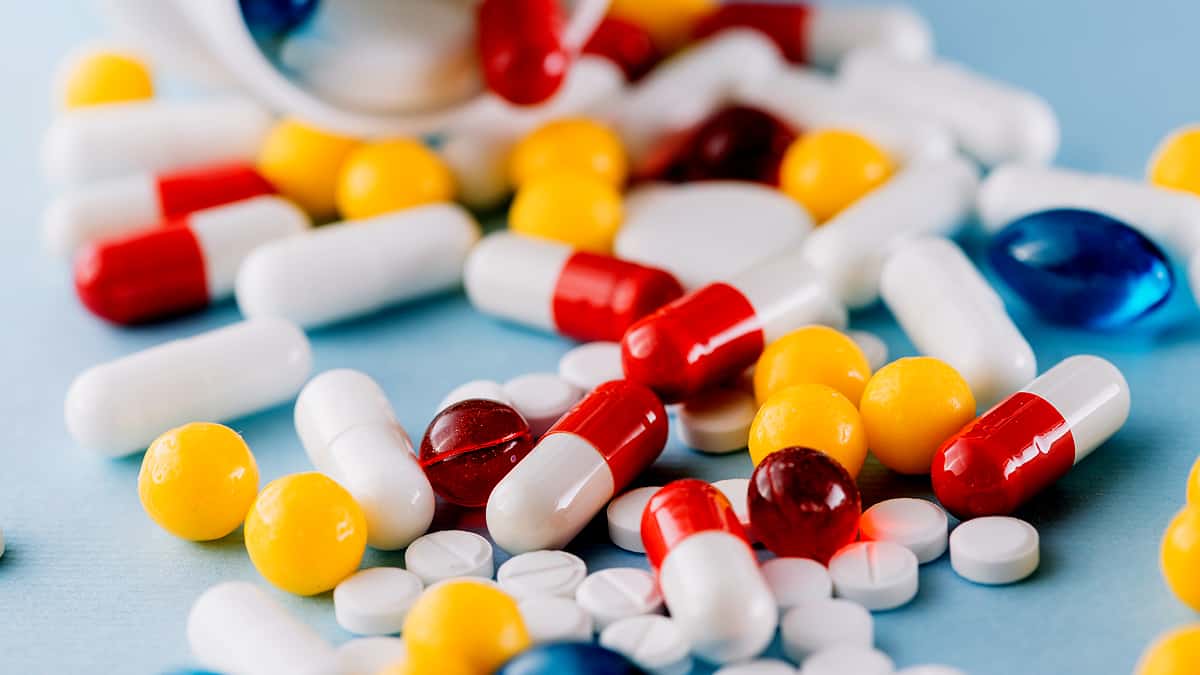Why Are Canadian Drugs Cheaper?
high drug prices

The United States has some of the highest drug prices in the world. Prescription medications that Canadians or Europeans might deem “expensive” are merely a drop in the bucket for U.S. residents.
While the high cost of medication has been a topic of conversation in the media, among political parties, and in campaign speeches in the past decade or so, this problem is not even close to being “new.” The cost of prescription drugs in the U.S. has been on the rise for many decades.
The reason it's been such a major issue as of recently is that the cost of prescription drugs has increased so exponentially in the past 20 years.
A report from the U.S. Homeland Security and Governmental Reforms Committee analyzed the prices of 20 common medications used by Americans enrolled in Medicare (government-sponsored health insurance for people ages 65 and older) and Medicaid (government-sponsored health insurance for the poorest Americans).
The report found that between 2012 and 2017, the average increase in price among the drugs analyzed for the report was 12% per year. One of those drugs (Nitrostat) increased an average of 42% each year, starting off at $16.00 and ending at $92.00. Mind you, this is $92.00 per month.
If you're an American, you might be hearing that Canadian drugs are cheaper than the ones you're being sold at your local pharmacy. But you might also assume that these drugs are not the same, or that they're unsafe.
But did you know that drugs sold in America are essentially the same as Canadian drugs? There is typically no substantive medicinal or therapeutic difference between the drugs that are available in the U.S. and those available just across the border — or in many other places in the world.
The big question then is why? Why are Canadian drugs cheaper? Why are Americans suffering under the weight of extraordinarily high prices when other people in the world can get the essentially the same medication for a fraction of the price?
Here are some major reasons for the significant price discrepancy, and how you can save money on your prescription drugs.
A Lack of Price Controls Hurts Americans
Drugs are cheaper in Canada than they are in the U.S. That's a simple fact. This is largely due to stringent regulation in Canada that prevents drug manufacturers from charging exorbitant prices for their products. Of course, the thought process here is that a medication doesn't do any good for the patient if they cannot afford to purchase it and take it.
On the opposite end of the spectrum, the U.S. does not regulate drug prices. In fact, they play absolutely no role in the price-setting process. Unlike most other countries, the U.S. allows drug companies to determine the prices of medication without any involvement from the government. This completely overlooks a very important factor: how high prices can affect the health and well-being of U.S. residents.
Prices are not regulated by the government once a new drug is manufactured and ready to sell. Instead, the decision is made by the drug companies themselves. Drug prices are then negotiated by individual insurance companies before they are sold to U.S. consumers.
Of course, this means that the type of insurance you have (if you have insurance — because Americans are not required to carry it and many don't have any) can have a major effect on the cost of your medication. If your insurance company wants you to take a certain medication over another (say, Symbicort over Advair), they can put Advair in a higher tier so you have to pay more for it.
They can design their prescription plans in such a way that it essentially discourages people from taking certain medication — arguably something that they have no business doing because it's often not in the best interest of their enrollees.
If you don't have insurance at all, or if your insurance company lists your medication as top tier, you're left paying the cash price for it. In some cases, this isn't a big deal — there are some generic medications that are very affordable. However, if you need something expensive (especially for a chronic disease), you might be out of luck.
Research shows that U.S. drug prices are consistently higher than in European countries. Prices are six times higher than in Brazil and 16 times higher than the average lowest-price country, which is usually India. On average, Americans spend $1,200 per year on medication, which is more than anywhere else in the world.
According to an article by Alison Kodjak of NPR, "[a] report published... in the journal Health Affairs, found that the cost of brand-name oral prescription drugs rose more than 9 percent a year from 2008 and 2016, while the annual cost of injectable drugs rose more than 15 percent. The price of insulin, for example, doubled between 2012 and 2016, according to the Health Care Cost Institute. And the price of Lantus, an insulin made by Sanofi, rose 49 percent in 2014 alone, according to the University of Pittsburgh."

Excuses Justifying the Price of Prescription Drugs in America
Pharmaceutical companies justify their prices based on an argument about the need for innovation and research, but research only accounts for about 17% of cost in drug manufacturing in America. A study on this matter was conducted by Peter Bach, a researcher at Memorial Sloan Kettering, on the 20 top-selling drugs in America.
Through their extensive research, "they found that the cumulative revenue from the price difference on just these 20 drugs more than covers all the drug research and development costs conducted by the 15 drug companies that make those drugs — and then some." Their numbers indicate that the revenue after the cost of research — totaling $80 billion a year — was an additional $40 billion which drug companies kept for profit. That's $40 billion in profit in one year from just the top 20 drugs sold in America.
However, there's evidence that leads researchers to believe pharmaceutical companies are inflating the amount they spend on research and development (convenient, since that's the number they use to justify their exorbitant prices).
A study from the Boston University School of Public Health found that pharmaceutical companies were actually overstating the amount they spend on research and development. While many companies boasted spending 18-20% of revenue on research and development, Socolar and Sager (the researchers on the study) found that the real number is closer to 11%.
To add insult to injury, Socolar and Sager found that overall, pharmaceutical companies were spending as much as three times that amount on marketing. They were literally spending three times their R&D costs just to market the drugs so they could turn a profit. By that logic, American consumers aren't paying for innovation … they're paying for marketing.
Given this information, it's relatively safe to say that hiking up drug prices under the guise of “innovation” doesn't justify the cost to consumers. Instead, when you look closely, the profit margin is grossly higher than the cost of research and development. And those profits seem to be pocketed by pharmaceutical and insurance companies.
Pharmaceutical CEOs are making tens of millions of dollars each year, literally. In the meantime, the companies themselves are bringing in tens of billions. If it were a matter of paying for research and development, why are CEOs taking home so much money and if their drugs are so innovative, why do they have to spend three times their R&D costs to convince doctors and patients to buy them?
Lack of Government Regulation is a Major Factor
Even after rebates and discounts (which are not available to every American, and require research to find), medications are still unaffordable and there isn't a good and fair reason as to why the drugs cost so much in the first place.
Since there isn't government regulation in place to control prices of drugs in the U.S., the negotiating is left up to the insurance companies. The U.S. is unique in this way. In Canada (and most other countries) the government oversees responsibility for the provision of healthcare. This ensures that every single person can access healthcare when they need it.
The U.S. has been through many ideations and bills proposing government-run healthcare, and it has mostly been shut down. In 2010, President Obama signed the Patient Protection and Affordable Care Act (ACA) into law, which greatly expanded health insurance access to Americans, and instituted an individual mandate.
This is not out of the ordinary for most other countries — Canada and most European countries have what's called compulsory healthcare (an individual mandate). The thought behind this idea is that if everyone has to legally have health insurance, they're more likely to seek care when they need it, less likely to let problems go until they're extremely expensive to fix, and less likely to go to the Emergency Room (the most expensive place to seek healthcare) when they're sick.
Instead, people will go to their doctor's office. They also received a free annual physical so their doctor could keep an eye out for potential problems and chart changes in health patterns over time. If everyone does this, the country as a whole gets healthier, and people spend less money on healthcare.
However, the ACA has largely been dismantled and is nearly nonexistent at this point. While health marketplaces still exist and two very important provisions remain in place (insurance companies must cover pre-existing conditions and allow children up to age 26 to stay on their parents' insurance plans), the law did little to make insurance or prescription drugs more affordable. (The reasons for this are complicated, and numerous, and a discussion for a different day.)
This is not to say that the U.S. doesn't have any kind of government-sponsored healthcare. They have Medicaid and Medicare — and the lack of government regulation and negotiation with regard to prescription drug prices is especially problematic for citizens in the U.S. who are on Medicare.

How Medicare Enrollees Suffer Most
Medicare insures over 55 million Americans over the age of 65 every year. The reason that drugs seem to be more expensive for people with Medicare plans is because federal law prohibits negotiation around drug pricing, while at the same time, demanding that it make all FDA approved drugs available to those enrolled.
In other words, the sky's the limit when deciding what to charge Medicare patients because under law, Medicare has to purchase the drug no matter what. Imagine that, the US Government is one the largest purchasers of prescription drugs in the world but has passed laws to prohibit itself from negotiating the price of those drugs! Who does the government truly represent in such a scenario – citizens and taxpayers or Big Pharma special interest groups?
This is unlike people enrolled in employer-sponsored health insurance or individual private insurance because their insurance companies are allowed to build their formularies, however, they choose. They're not required to offer every medication, and they are allowed to negotiate with pharmaceutical companies.
Whether you realize it or not, every American is affected by the rise of drug prices in the U.S. — not just the sick, elderly, uninsured, or underinsured. When (not if, but when) you need to see a doctor or end up in the hospital, you're suffering the consequences of the government's hands-off approach. One could argue about the long-term economic impact, but it's easiest to see the effects on a personal level.
Even healthy people need healthcare sometimes. And when they do, they're paying the same really high prices as everyone else.
U.S. government officials have chosen to take a very laissez-faire approach to healthcare because they believe principles of economics to apply to this industry or because they are being lobbied incessantly to do so. As a result, the industry has grown — but at what cost to American residents?

The American Health Insurance Problem
In the U.S., citizens are expected to purchase their own health insurance, except in cases where individuals qualify for government-funded policies such as Medicare, Medicaid, or the Veteran's Health Administration.
Most often, insurance policies are provided through employers. This is an accidental policy that became standard after the War Stabilization Act of 1942. President Roosevelt and Congress were concerned about inflation during WWII, so they froze wages across the country. This prevented employers from using wages as a means of recruitment.
As a result, they started offering health insurance. There were already a few health insurance companies (such as Blue Cross and Blue Shield), but the landscape was unrecognizable from what it is today. For starters, there were non-profit insurance companies who insured anyone, regardless of their pre-existing conditions or health status.
Even though employer-sponsored healthcare was initially a recruitment tool, the practice stuck. 80 years later, and Americans are still largely relying on their employer to provide access to health insurance. Because each employer can set their own standards of care and price determinations, coverage and benefits vary greatly from employer to employer.
In order to decrease their own financial responsibilities, a lot of employers provide benefit packages that come with high deductibles and poor prescription coverage, leaving employees to pay outrageous out-of-pocket costs.
Lost among this heavily privatized health care system, approximately 33 million Americans were uninsured in 2019 — that's about 12% of the population, 5% of which are children. This figure includes 1 out of every 5 elderly citizens.
As alluded to previously, privatized healthcare also means that doctors are paid through private insurance companies who can also haggle or negotiate which services should be covered. This creates inequality among Americans because those who are employed by large companies are more likely to have affordable health insurance (better negotiating power), whereas small business owners won't have that kind of leverage.
But in a national health care system like Canada's, medical professionals bill the government, where the cost of services provided is heavily regulated. Also, the government sets drug prices, so pharmaceutical companies are limited in how much they can charge consumers. There is a trade off in this system, however, in that access to physician care can be slower. Wait times and overwhelmed healthcare personnel can be a frustrating experience for those in the Canadian system whereas in a private healthcare system, the government doesn't limit the amount of dollars that go into it so service levels are often superior. Yet patients almost universally appreciate that their drug prices are lower than in the United States.
Patent Law
Another major contributing factor to the high cost of prescriptions for Americans is the complex structure of patent law.
In order for drug companies to make back the money they've put into research and development and then add what we have already established is an inflated and soaring annual mark up, U.S. law allows companies to have an exclusive patent on prescription drugs for a certain period of time after their release. This essentially gives the manufacturer a legal monopoly. No other company is allowed to develop a drug using the same active ingredient that works in the same way. (Specifically, it blocks generic drugs.)
As a standard, this period of time is about 20 years — however, there are ways of lengthening the patent protection period.
If the manufacturer changes the formula, or the way in which it's administered to the patient, or if it gets approved for treatment of a different condition, the patent period can be extended. 20 years may turn into 25 or 30. During this time, the manufacturer is getting every single dollar earned from their medication with no repercussions whatsoever.
Other countries also have patent laws, but they operate differently. They might allow for a 10+year patent period with exclusivity, or disallow lengthy extensions. But in consideration of this monopoly they impose fair pricing through price controls.
The other issue here is that competition is required in order to drive prices down. This is a cornerstone of capitalism but allowing for a legal monopoly prevents this critical component from coming to fruition. Furthermore, newer drugs should theoretically be more effective, which should lower the price of older drugs because their demand should go down. But just because a newer drug is available, doesn't mean that you are getting better treatment than you would with another drug that has been on the market longer. If a drug doesn't treat an illness any differently than an already existing drug, many other countries would reject it. In the U.S. though, Big Pharma backs these drugs of dubious therapeutic benefit over older and less expensive treatments with billions of marketing dollars to turn them into blockbusters.
Affordability is another reason why a country would reject a drug.
However, in the U.S., prescription drugs are treated like any other good or service that can be sold for profit except they are handed the benefit of a monopoly power with little to no obligations to the public in return. Since pharmaceutical companies are in control of their own prices, many argue that they're taking advantage of people while they are vulnerable — and pharmaceutical executives don't seem to care while the government is more than complicit with so many elected officials accepting campaign financing from Big Pharma and then doing what appears to be their bidding.
Nevertheless, drug manufacturers continue to argue that the costs are necessary for innovation and research so that Americans can lead the world in the scientific sector of new drug development.
Generic Drugs: Still Complicated for Americans
While generic drugs are eventually available at a lower cost, it often takes years before they receive FDA approval. Newer laws have been written to help cut down on the amount of time it takes to approve a generic drug, but they still take time.
Generic drugs have a starting point at least — the brand name version would have already created a formula and have data that can get a new research team started. But when all is said and done, you still have to create the drug and test it. And that takes time.
Generally speaking, generic drugs are less expensive than brand name drugs, which lends credence to the theory that consumers are actually funding the brand's marketing budget — not their research and development costs.
Generic drugs are typically the preferred drug for both consumers and insurance companies exactly because they're cheaper. Insurance companies actually encourage use of generics by listing them with a lower copay. Some generic drugs are literally free for enrollees. Usually these are saturated markets in common categories (high cholesterol, birth control pills, etc.).
However, generic drugs don't necessarily work for everyone. Filler and other inactive ingredients are used in most medication, and sometimes, a person is allergic to one of them, which means they require the brand name medication — which means they have to pay more.
Again, if competition is necessary to drive down prices, why are we seeing prescription drug prices consistently increasing in the U.S.?
A study from the The American Journal of Managed Care (AJMC) found that generic drug prices weren't affected by competition until there were at least three different products on the market. They also found that many generic drugs only had two manufacturers, which meant that their prices were largely unaffected by competition. Of course, their data also showed that the cost of generic drugs was increasing over time.

Purchasing Medications Through an Online Canadian Pharmacy Is Cheaper
The exorbitant cost of drugs forces many people to stop taking their medication. A recent study conducted by the Journal of Clinical Oncology showed that, "13 percent of cancer patients did not buy approved chemotherapy drugs if they had a co-payment of $10 a month, while 67 percent did not if they had to pay $2,000 or more.”
Another study showed that 33.6% of uninsured citizens didn't take their medication as prescribed. That's 1 out of every 3 people who can't afford the medications that they need.
If you're struggling to pay for your medications, you don't have to accept it, or even stop taking your prescription in order to save money. There is not only hope, but a tangible solution at your fingertips.
At NorthWestPharmacy.com, we sell hundreds of prescription drugs at a fraction of the price you'd find at your local pharmacy. In fact, we can save you up to 95% on your medication.
In fact, we're so confident that we have the lowest possible price that we guarantee it. If you find your medication cheaper elsewhere, we'll beat it.
But even more important than our price beat guarantee, we are proud of our dedication to safety and accuracy. We know that it can be nerve-wracking to purchase medication online, especially if you've never done it before and are cognizant that there are unaccredited and unscrupulous online pharmacies out there. So we do everything within our power to create and maintain trust with our customers.
Not only do we sell prescription drugs, but we sell over-the-counter (OTC) meds and pet meds. No matter what you're ordering (for your husband Fred or your dog Fido), you can count on us to send you exactly what you ordered.
We follow all safety guidelines according to CIPA and IPABC. (We are accredited by both organizations.) These include keeping a patient record that includes medical and prescription history as well as known allergies, requiring a valid prescription (from a veterinarian or a doctor), and always providing access to a licensed pharmacist for medication counseling and other questions.
Furthermore, our pharmacists check every order for potential negative drug interactions — just like the pharmacist does down the street from your house, or your mail-order pharmacy does.
If you're new to NorthWestPharmacy.com, we highly recommend checking out the independent reviews that previous and current customers have written about us on third-party websites like Shopper Approved and Trust Pilot. We maintain a 4.8/5 overall satisfaction rating from over 475,000 reviews, making us the most independently reviewed and five-star rated online pharmacy in the world.
And perhaps best of all, we boast a flawless safety record.
Given that NorthWestPharmacy.com is an online pharmacy, we're fully aware of how important high-quality customer service is, and we're committed to providing the best.
Our customer service representatives are known for their patience, happily helping people place their orders over the phone in real-time if the customer prefers. Our call center is open seven days a week for your convenience. And of course, if you need to reach us outside of business hours, you can always email us.
Before you skip a dose, or forego your medication altogether, give us a call at 1-866-539-5330 and let us see how we can help you.
We hope to hear from you soon!